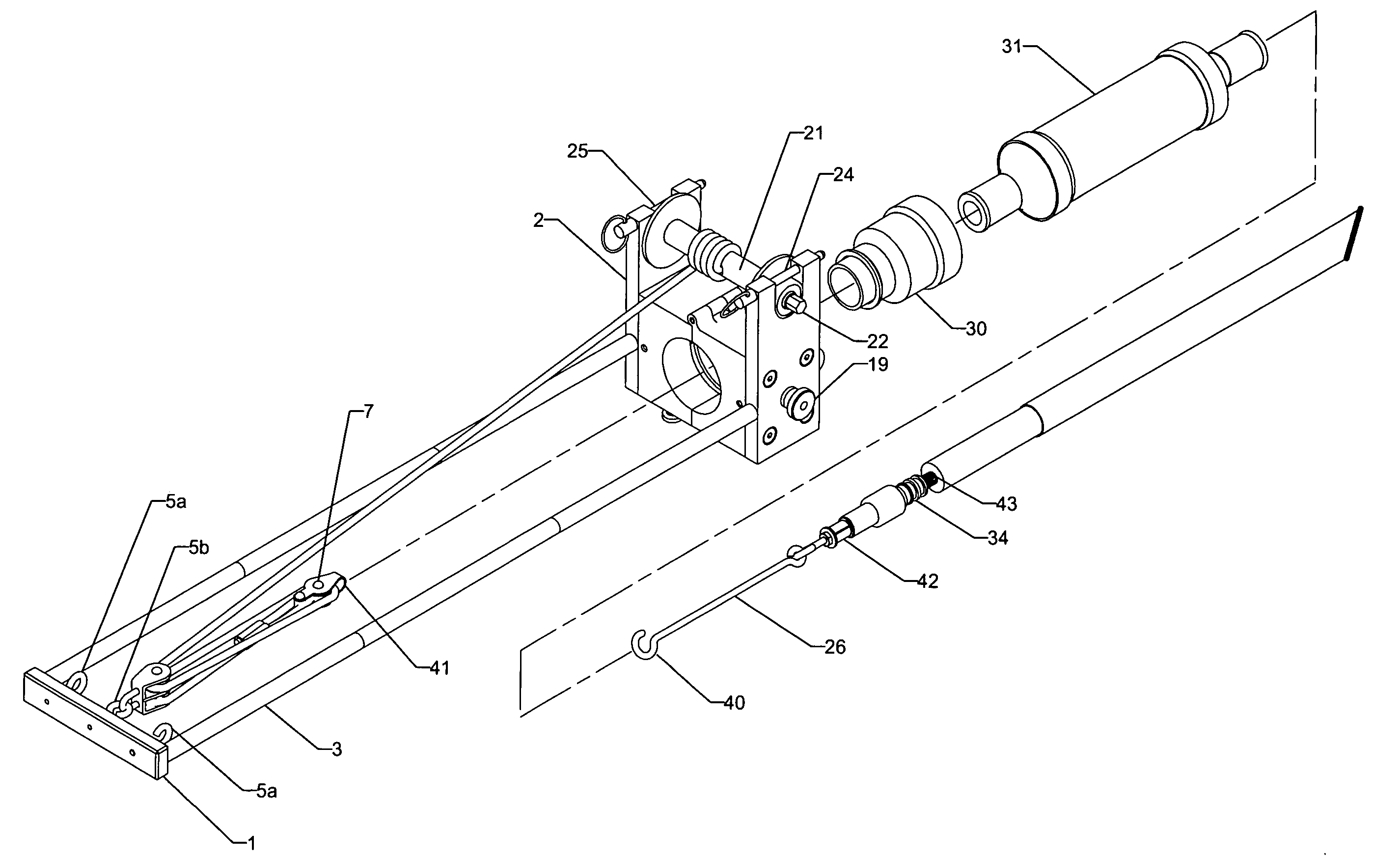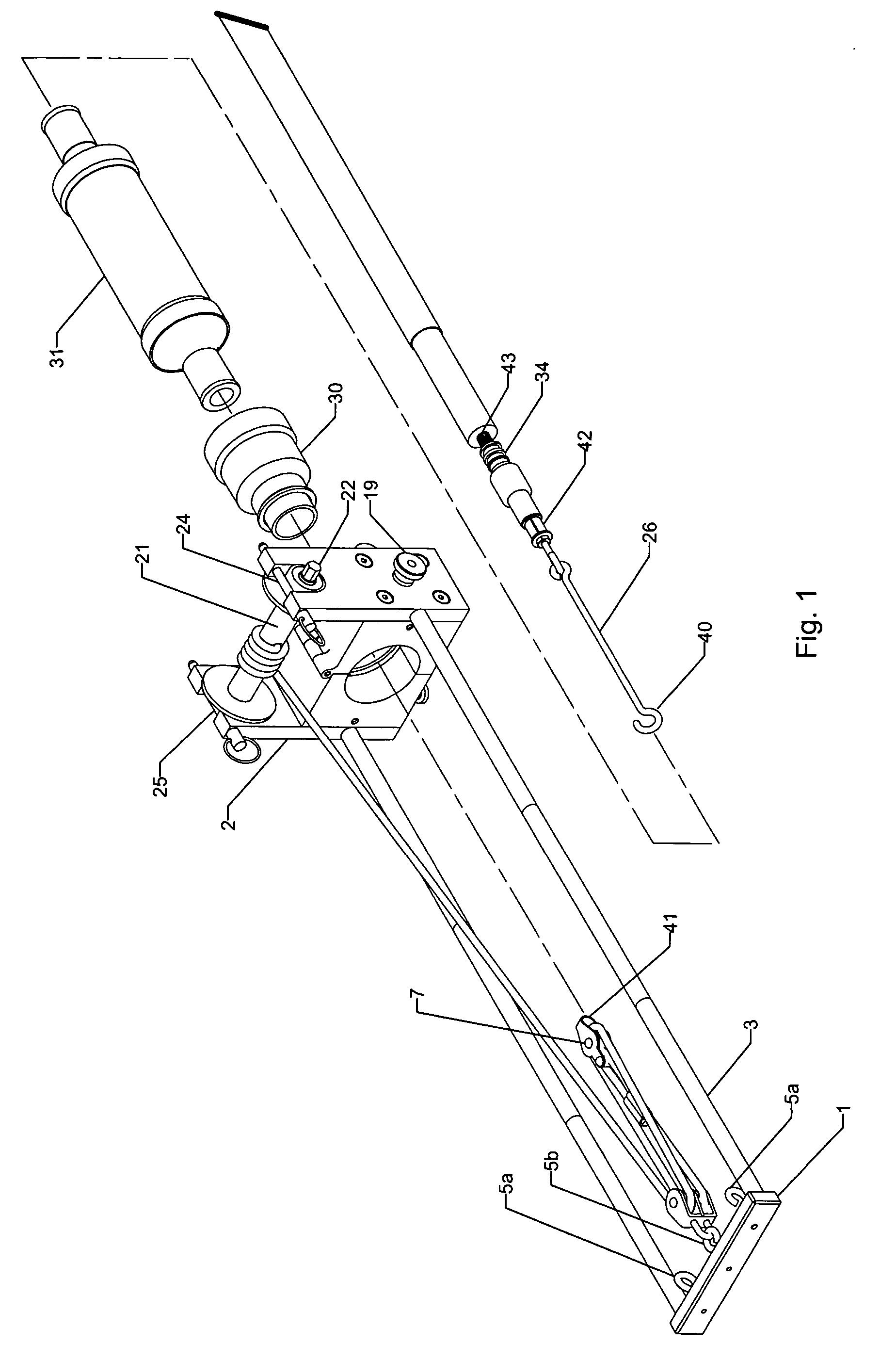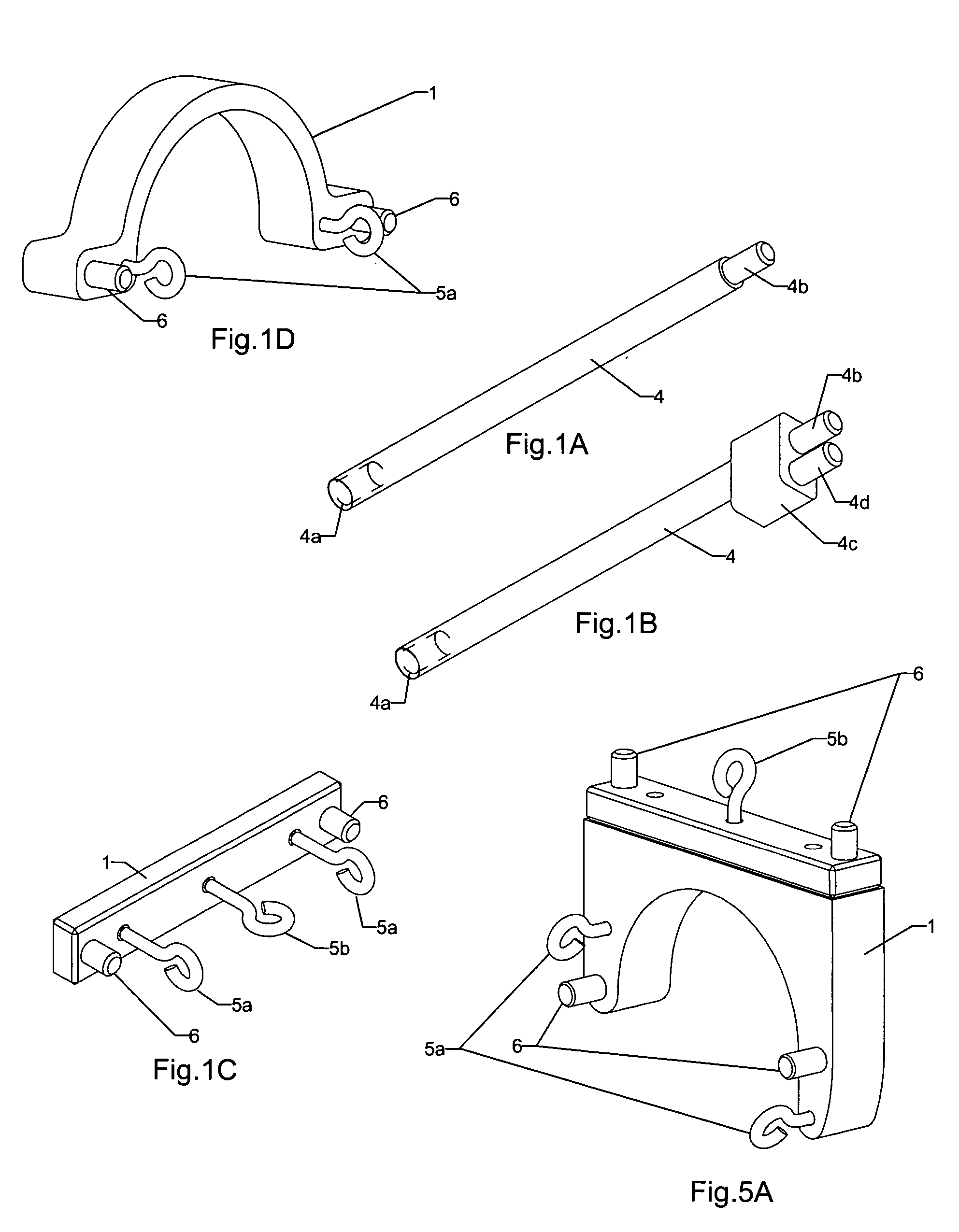Electric cable splicing system
a technology of electric cables and splicing devices, which is applied in the direction of workpiece holders, manufacturing tools, hoisting equipment, etc., can solve the problems of weak hands, no known device that can be used in splicing together, and inability to achieve strong hands
- Summary
- Abstract
- Description
- Claims
- Application Information
AI Technical Summary
Problems solved by technology
Method used
Image
Examples
Embodiment Construction
[0032]FIG. 1 illustrates a first stage of the process when splicing an electrical underground cable. The reason there are several stages is the fact that various pulling forces on the elements of the splice occur in different or opposite directions. In this first stage there is a stationary block 1 and there is a stationary clamping block 2. The reason why these blocks are stationary is that various elements that make up the splice have to move independently of the cable that is clamped or will be by the clamping block 2. Both the clamping block and the stationary block are held in their position by the static rods 3. The static block 1 is shown in more detail below in FIG. 1C. The static rods 3 are shown in more detail in FIGS. 1A and 1B below. The static block 1 consists of pegs 6 which can and will receive at least one end of the static bar 3 in FIG. 1. The pegs 6 can be threaded or be smooth depending of n the manufacturer. The clamping block 2 is made up of two halves 10 and 11...
PUM
| Property | Measurement | Unit |
|---|---|---|
| force | aaaaa | aaaaa |
| friction | aaaaa | aaaaa |
| flexible | aaaaa | aaaaa |
Abstract
Description
Claims
Application Information
 Login to View More
Login to View More - R&D
- Intellectual Property
- Life Sciences
- Materials
- Tech Scout
- Unparalleled Data Quality
- Higher Quality Content
- 60% Fewer Hallucinations
Browse by: Latest US Patents, China's latest patents, Technical Efficacy Thesaurus, Application Domain, Technology Topic, Popular Technical Reports.
© 2025 PatSnap. All rights reserved.Legal|Privacy policy|Modern Slavery Act Transparency Statement|Sitemap|About US| Contact US: help@patsnap.com



